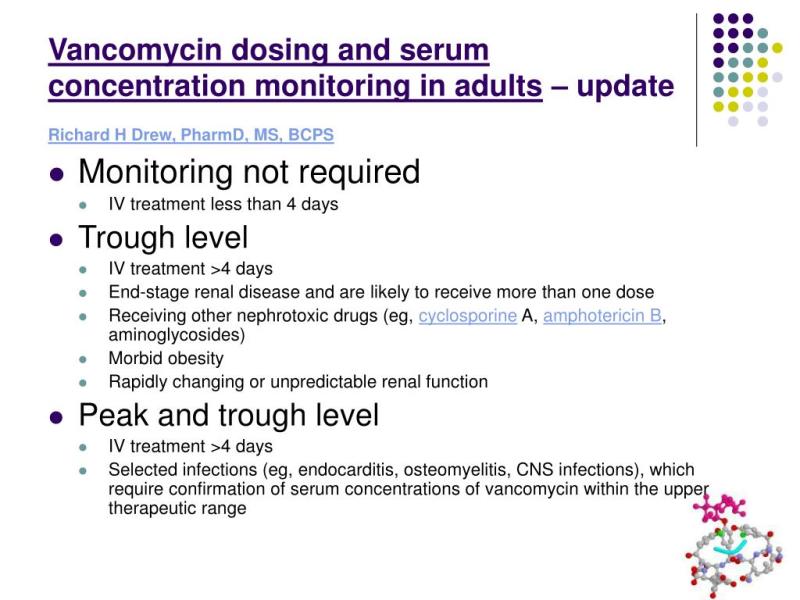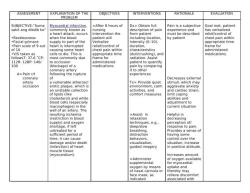What is the peak level of vancomycin?
Vancomycin peak levels refer to the highest concentration of the drug in the bloodstream after a dose has been administered. Unlike trough levels, which are measured just before the next dose is given to assess the minimum concentration, peak levels are drawn shortly after the completion of a vancomycin infusion to determine the maximum concentration achieved.
The therapeutic range for vancomycin peak levels can vary based on the specific clinical scenario and the guidelines of a healthcare institution. However, typical recommendations for vancomycin peak levels often fall within the range of 20 to 40 micrograms per milliliter (mcg/mL). It's important to note that this range may be adjusted based on the severity of the infection being treated, patient-specific factors, and institutional protocols.
The purpose of monitoring vancomycin peak levels is to ensure that therapeutic concentrations are reached, which is important for the drug's effectiveness against susceptible bacteria. However, it is equally crucial to avoid excessively high peak levels, as this could increase the risk of adverse effects, particularly nephrotoxicity.
Healthcare providers will consider both trough and peak levels when assessing vancomycin dosing to achieve a balance between therapeutic efficacy and safety. The specific timing for drawing vancomycin peak levels may vary based on institutional protocols, but it is commonly done around 1 to 2 hours after the completion of an intravenous infusion.
It's essential for healthcare professionals to interpret vancomycin levels in the context of the individual patient's clinical condition, renal function, and the specific guidelines or protocols in place at their institution. Dose adjustments may be necessary based on these considerations to optimize the therapeutic benefit of vancomycin while minimizing the risk of adverse effects.
What is the highest permissible level of vancomycin in medical treatment?
The highest permissible level of vancomycin in medical treatment depends on various factors, including:
Patient factors:
- Age: Younger patients, especially infants and children, may require lower vancomycin levels to avoid toxicity.
- Renal function: Patients with impaired renal function may require lower vancomycin levels due to slower elimination of the drug.
- Presence of other medications: Some medications can interact with vancomycin and affect its metabolism or clearance, requiring adjustments to the dosage or monitoring levels.
Infection type:
- Severity of infection: Severe infections may require higher vancomycin levels to achieve therapeutic effects.
- Type of bacteria causing the infection: Different bacteria have varying susceptibility to vancomycin, influencing the targeted therapeutic range.
Treatment goals:
- Achieving therapeutic levels: The primary goal is to ensure vancomycin levels are within the therapeutic range (trough levels typically between 10-20 mcg/mL), which optimizes effectiveness against the infection.
- Preventing toxicity: High vancomycin levels can lead to adverse effects like kidney damage, hearing loss, and bone marrow suppression.
Generally, the highest permissible vancomycin level is considered to be 20 mcg/mL. However, exceeding this level may be acceptable in specific situations, such as:
- Severe or life-threatening infections: In some cases, the potential benefits of achieving higher vancomycin levels may outweigh the risks of toxicity, especially when other treatment options are limited.
- Close monitoring: If vancomycin levels exceed 20 mcg/mL, close monitoring of kidney function and blood cell counts is crucial to ensure patient safety.
It's crucial to remember that determining the highest permissible vancomycin level requires individual assessment by a healthcare professional. They will consider various factors mentioned above and tailor the treatment plan to optimize effectiveness and minimize the risk of adverse effects.
Here are some resources for further information:
- American Society of Health-System Pharmacists (ASHP): https://www.ashp.org/-/media/assets/policy-guidelines/docs/therapeutic-position-statements/therapeutic-monitoring-vancomycin-adults.ashx
- Infectious Diseases Society of America (IDSA): https://academic.oup.com/cid/article/49/3/325/496155
- Society of Infectious Diseases Pharmacists (SIDP): https://sidp.org/resources/Documents/Vanco%20guidelines%202020.pdf
Remember, always consult your healthcare professional for personalized advice regarding vancomycin treatment and dosage.













